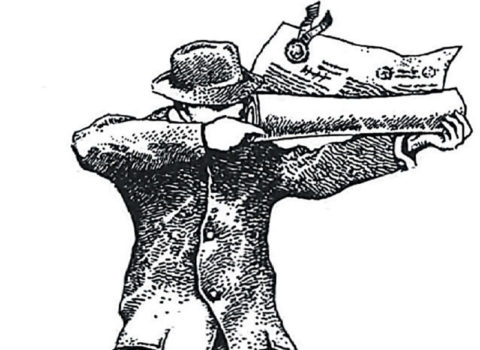Published in the December 1964 issue of Harper’s Magazine, “The Traffic in Guns” explores how the gun lobby stifled gun-control legislation in the 1960s. The full article is free to read at Harpers.org through June 29. Subscribe to Harper’s Magazine for access to our entire 165-year archive.
[Lede]
From a Huffington Post report, published June 18, 2015, on President Barack Obama’s response to the massacre of nine African Americans by a white gunman in Charleston, South Carolina.
“I’ve had to make statements like this too many times. Communities have had to endure tragedies like this too many times,” [President Obama] continued. “Once again, innocent people were killed in part because someone who wanted to inflict harm had no trouble getting their hands on a gun. … We as a country will have to reckon with the fact that this type of mass violence does not happen in other advanced countries.”
The guiding principle of the NRA is the belief that the only justifiable laws are those providing stiffer penalties for the criminal use of guns, and that preventive measures, such as a registration requirement, would neither stop lawbreakers from obtaining guns nor reduce crime.
To support this thesis, the NRA vilifies as ineffective New York’s strict Sullivan law, which requires a permit to own as well as to buy a handgun. Congressman Dingell once called it “the continuing sorrow of collectors, shooters, and hunters.” The state’s high crime rate is cited as evidence.
But in fact, as Senator [Thomas] Dodd has pointed out, the homicide rate per 100,000 population in cities with some gun regulation is lower than in those with no controls. In the first group the rate in 1962 was: New York, 5.4; Chicago, 7.6; Los Angeles, 6; Philadelphia, 4.9; and Detroit, 5.5. In pistol-packing Phoenix and Dallas, with virtually no gun controls at all, the homicide rates were 8.1 and 13.4, respectively.
Opponents of gun-control laws question the validity of such comparisons. But this is really not the issue. For like most lobbies, this one is powered by dollars-and-cents logic, with a strong admixture of pseudopatriotism to give it added status.
Hunting, target, skeet, and trap shooting are big business today. Their devotees spend an estimated $200 million to $250 million a year on guns, ammunition, and shooting accessories. Even more lucrative are the “side” ramifications, which probably produce a billion dollars annually for the makers of automobiles, fuel, wearing apparel, and boats.
Also worried about legislation that might hamper hunters are state conservation departments, which depend heavily on hunting license fees and taxes for financial support. There is, of course, no law now on the books or under consideration that would prevent the bona fide sportsman from buying any weapon or ammunition he needs to train his sights on a buck, quail, or clay pigeon. Indeed the genuine sportsman’s voice is seldom heard in the outcry against gun-control laws. The dominant note is the shrill voice of the superpatriot. His sentiments were once well synthesized by Goldwater’s ghost-writer, Karl Hess, in a magazine article. “The question of freedom, when stripped to its steel center, is just this: Who has the guns?”
Read the full article here.
























































































































































